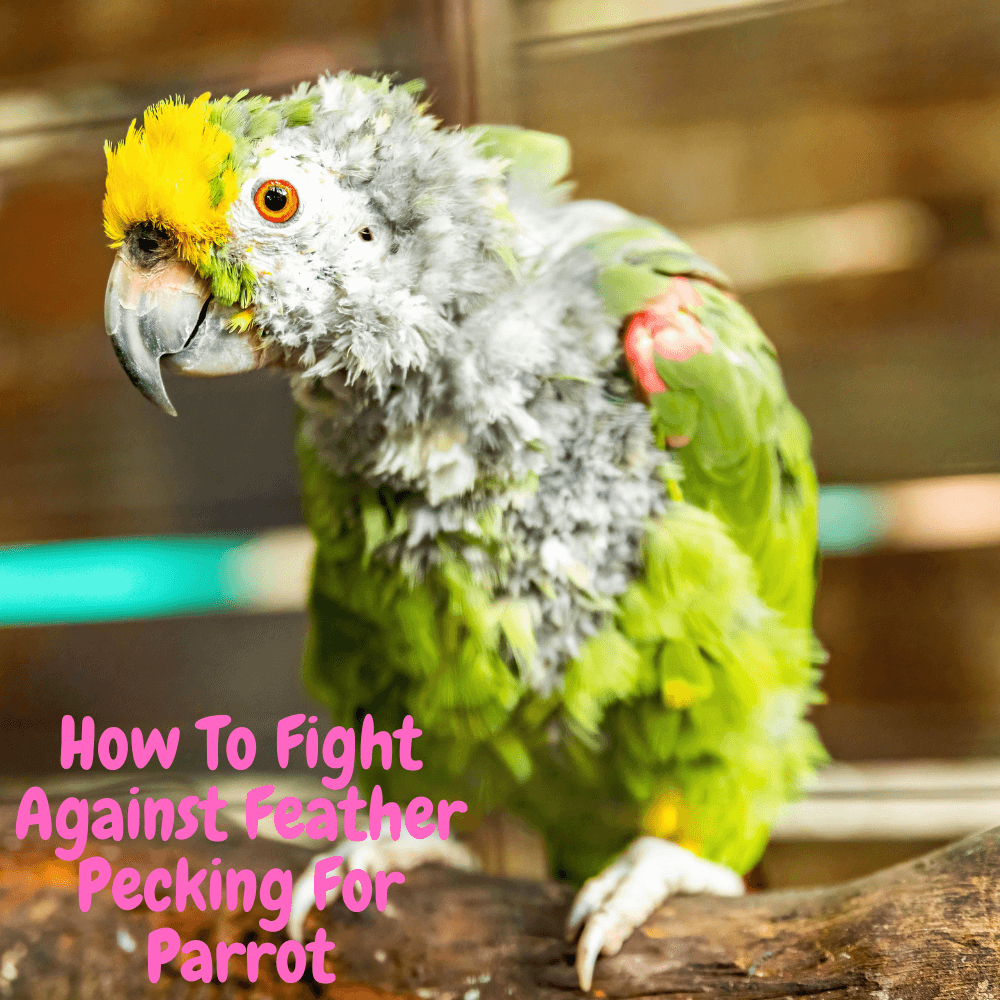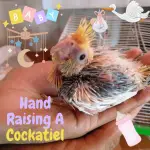
Fight against feather pecking: We commonly call pecking the fact that a bird damages or tears its own feathers or those of a congener despite the plumage care provided. There are therefore three types: self-picking, allowing, and over-smoothing. It is important to clearly determine what type of disorder you are dealing with in order to put in place a targeted and coherent action plan to have the best chance of success.
You should know that contrary to popular belief, feather plucking and self-mutilation behaviors are rarely linked to psychological causes. Over the past few decades, advances in avian medicine have made it possible to better study the symptoms in order to understand the causes of this phenomenon. It turned out that in the majority of cases, pecking is a symptom, and not a pathology in itself, nor a behavioral disorder.
Many cases studied by specialized veterinarians have highlighted the almost systematic presence of an underlying condition, whether local or generalized, and that feather-picking behavior is directly linked to discomfort. caused by pathology. In other words, you can get rid of guilt: Coco doesn’t take off her feathers because she’s depressed!
But then what can cause the plucking of feathers? The causes can be varied. From a simple food allergy to the tumor, through dietary deficiencies, fungal infections, avian skin infections, and wounds, a multitude of conditions can be expressed by a tearing behavior. Consequently, the first reflex to have in the event of feather pecking is to consult an avian veterinarian for a complete check-up.
Only a specialized study will make it possible to highlight, or rule out, an underlying pathology, and remedy it. Sometimes medical or surgical treatment will be necessary, but in most cases, a simple dietary rebalancing coupled with small changes in your bird’s lifestyle can work wonders!
If self-picking is exasperating for owners who find themselves very destitute, allspice is an even more annoying disorder. Because in this particular case, the bird pulls the feathers of another congener, so it is not necessarily a symptom of its own disease. In this case, there can be two leads: one medical and one behavioral.
If the biting bird chews or eats the feathers of its congener, then it is very likely that it suffers from a deficiency, which it seeks to fill by consuming feathers. But if he’s just ripping them off, it may be a learned behavior. It sometimes happens that a pair of adult birds attacks one of its young and tears its feathers. If nothing is done to prevent it, the little bit will survive, but he will learn this uprooting behavior and will tend to reproduce it, either on his partner or on his future broods.
This is why it is absolutely necessary to intervene to put an end to the plucking of feathers by adults on young people, to break the chain of learning. There are bittering sprays and lotions that are very effective in discouraging parents and stopping the behavior immediately after it starts.
Finally, surfacing, which is a less serious form of feather pecking, often reflects a plumage hygiene problem or a dietary imbalance. In this case, it is necessary to bring plumage care products to help the bird to maintain it, and once again to make a health check with your veterinarian, to rule out any risk of bad evolution.
Avian skin infections
In recent years, the long list of possible causes of feather pecking in birds has been supplemented by skin diseases of inflammatory origin.
A bird that suffers from a systemic inflammatory disease ( examples: sarcocystosis, seasonal or non-seasonal allergy, PDD ) may see the inflammation spread to its skin. Inflammatory cells that infiltrate the skin cause more or less intense itching. Some birds will go so far as to damage their feathers and self-harm.
The pecking of some individuals can therefore be explained by the presence of this inflammation. A study by Dr. Garner of 412 pecking birds found that 51% of them had an inflammatory skin disease. The condition, therefore, does not seem so marginal. In order to establish this diagnosis, a biopsy must be done.
The paired biopsy
In birds with pecking problems with or without self-harm, it is, therefore, advantageous to perform a skin biopsy. But the technique differs somewhat from that practiced a few years ago. It is not only the affected site that is biopsied but also an area where the skin is perfectly healthy. A piece containing a feather is therefore taken from the place where the bird practices its pecking and another similar piece is taken behind the head.
This place is inaccessible to the bird’s beak. A pathologist then examines the tissue from both sites and determines if there is any inflammation in the two pieces (a sign of inflammatory skin disease) or only in the sample taken from the area mutilated by the bird ( inflammation secondary to the damage done by the beak.
A paired biopsy is therefore a minimally invasive means of separating cases of pecking into two groups: traumatic ( examples: behavior, hormonal, nutritional, sexual frustration, etc. ) or inflammatory ( examples: PDD, allergies of all kinds ). The presence of inflammation in both biopsies indicates that inflammation is most likely the cause of pecking.
The particularity of certain species
Dr. Garner was able to determine, by examining several biopsies, that amazons and macaws most often had an inflammatory skin disease, while cockatoos and African grays very rarely had an inflammatory skin disease that could explain their pecking. In the other species observed ( quaker, conure, Eclectus, cockatiel, budgerigar, and caique ) there was no more inflammatory skin disease than traumatic inflammation.
Symptoms of Inflammatory Skin Disease
Besides the birds suffering from itching and removing or damaging their feathers, their skin may sometimes appear drier and red in color. Some birds self-harm to the point of reaching the muscle under the skin. Characteristically, these birds scratch even when an attempt is made to entertain them or distract them. The discomfort is real and sometimes birds startle, flap their wings frantically or vocalize when scratching. Symptoms can appear at any age and can last year-round or are seasonal.
To control an inflammatory skin disease, aim to reduce inflammation by using antihistamines as needed ( which seem to give better results in macaws ), a hypoallergenic diet, eliminating environmental allergens as much as possible (for example nicotine from cigarettes, etc. ), and supplement the diet with supplements known to help control inflammation. An omega 3 and omega 6 supplement works well.
If a food allergy is suspected, Kaytee’s hypoallergenic feed can be tried. This meal made from rice and containing a good amount of flax seeds can help to significantly reduce skin inflammation and therefore itching.
The bird that responds to a hypoallergenic diet may also consume other foods with low antigenicity: cooked salmon or chicken, spinach, kale, green pepper, green bean, cantaloupe, cottage cheese, and lentils.
So, if your bird is pecking, don’t automatically jump to the conclusion that he has an inflammatory skin disease. The list of causes of pecking is very long. Your bird should therefore undergo other tests before undergoing a paired biopsy. A simple gram stain of his stool may give the answer. The presence of bad yeast in his intestine sometimes causes itching. Fixing a pecking case can be very easy for some and really complex for others!




















